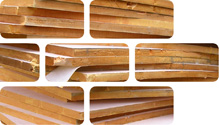
Foam Insulation 17 06 04
Foam insulation is a rigid closed cell product made from blown insulation and manufactured in a wide range of styles, sizes, thicknesses and finishes depending on the specification required. It can be bound to another product to form a composite. It will sometimes include an insulating metal film and/or an architectural face e.g. vinyl. Testing may be necessary to determine the presence of CFCs.
Usage & Probable Locations
Foam insulation sheet is mostly used for insulating cavity walls, floors, ceilings and stud walls but is also used as an insulating and decorative layer underneath vinyl steel sheeting and cladding of commercial and industrial buildings. It is commonly found on roofs, gable ends, external walls, ceilings, rafters, over and above suspended and concrete floors and in stud walls.
Personal Protective Equipment
PPE requirements indicated are for guidance purposes only. DRIDS has identified the PPE that is mandatory on all demolition projects and ones that may be required subject to site specific Risk Assessment & Method Statement (RAMS). Hover over the icon to determine the types of PPE required for the removal of this material.
Removal, Segregation & Storage
Foam insulation sheets that are in good condition, not damaged and not coated with paints or other coatings may have some reuse value. They should be segregated and stored flat on a suitably sized pallet and away from plant movements. Foam insulation destined for recovery or recycling should be stored in a similar fashion or collected within a covered segregated skip to avoid contamination. Foam insulation destined for landfill should be segregated from any hazardous materials and placed in a mixed waste skip.
Tools
Fixtures, Fittings & Connections
Foam insulation has been traditionally fixed in place with nails or underneath roofing sheets with screws or drive nails For cavity walls, inbetween trusses or above/below/inbetween suspended and concrete floors, the foam insulation sheets will be tightly run between the timbers or concrete joists or just laid in place over or under the slab. Products like thermal laminated boards containing plasterboard, foam insulation and insulating film are bound together with adhesives and difficult to separate for recycling.
Health & Safety
Subject to task-specific Risk Assessment & Method Statement (RAMS). Use correct protective equipment for removing fixings, especially nails and screws. Wear gloves when handling sheets with damaged edges, coated in insulating film or decorative film to prevent irritation, cuts and friction burns. Wear eye protection when removing nails or screws with a crowbar, hammer or nailbar. Do not walk on wet and slippery sheets. Wear mask when cutting or breaking foam insulation to prevent inhalation. Do not walk on insulation boards between joists.










